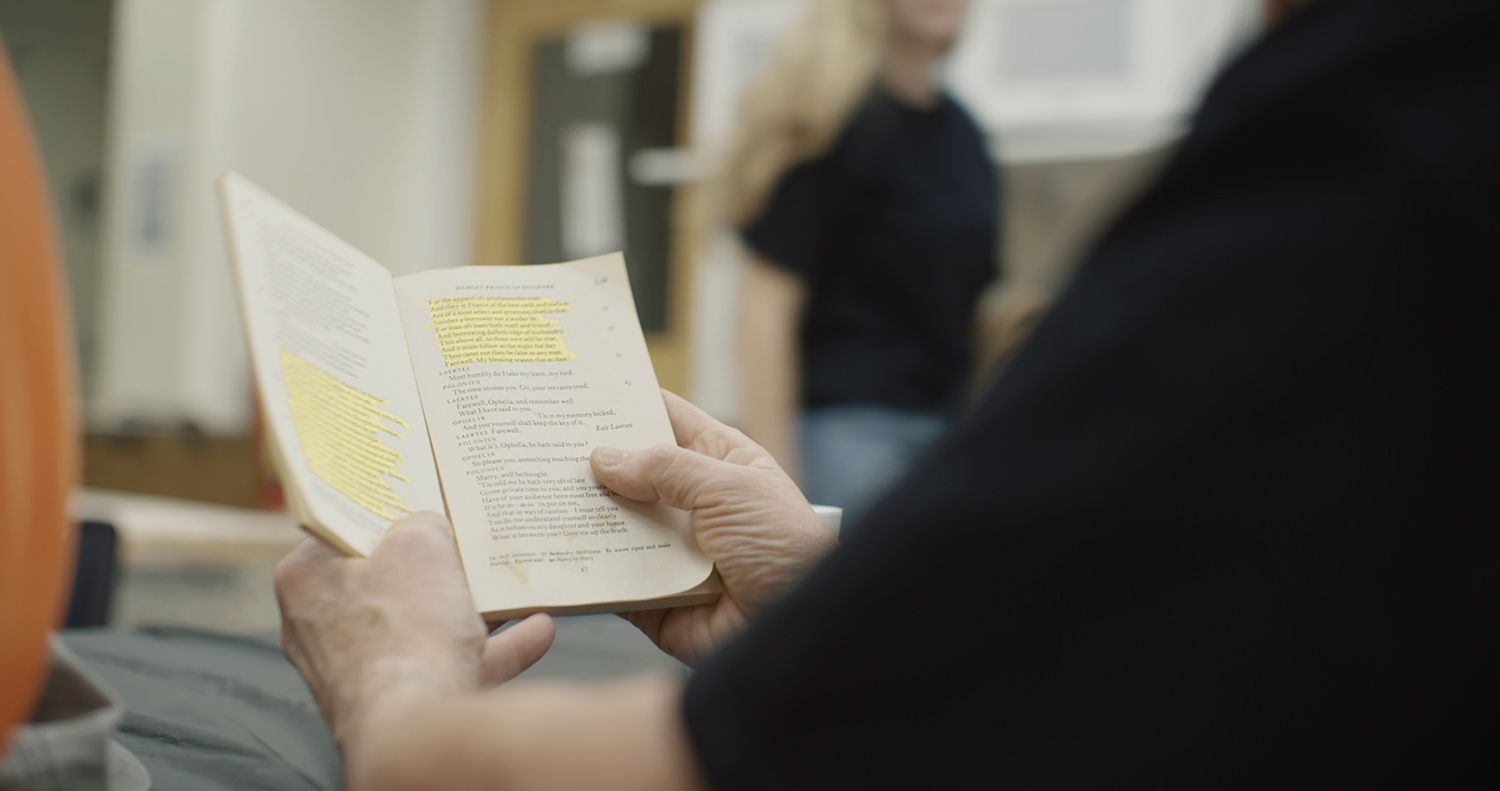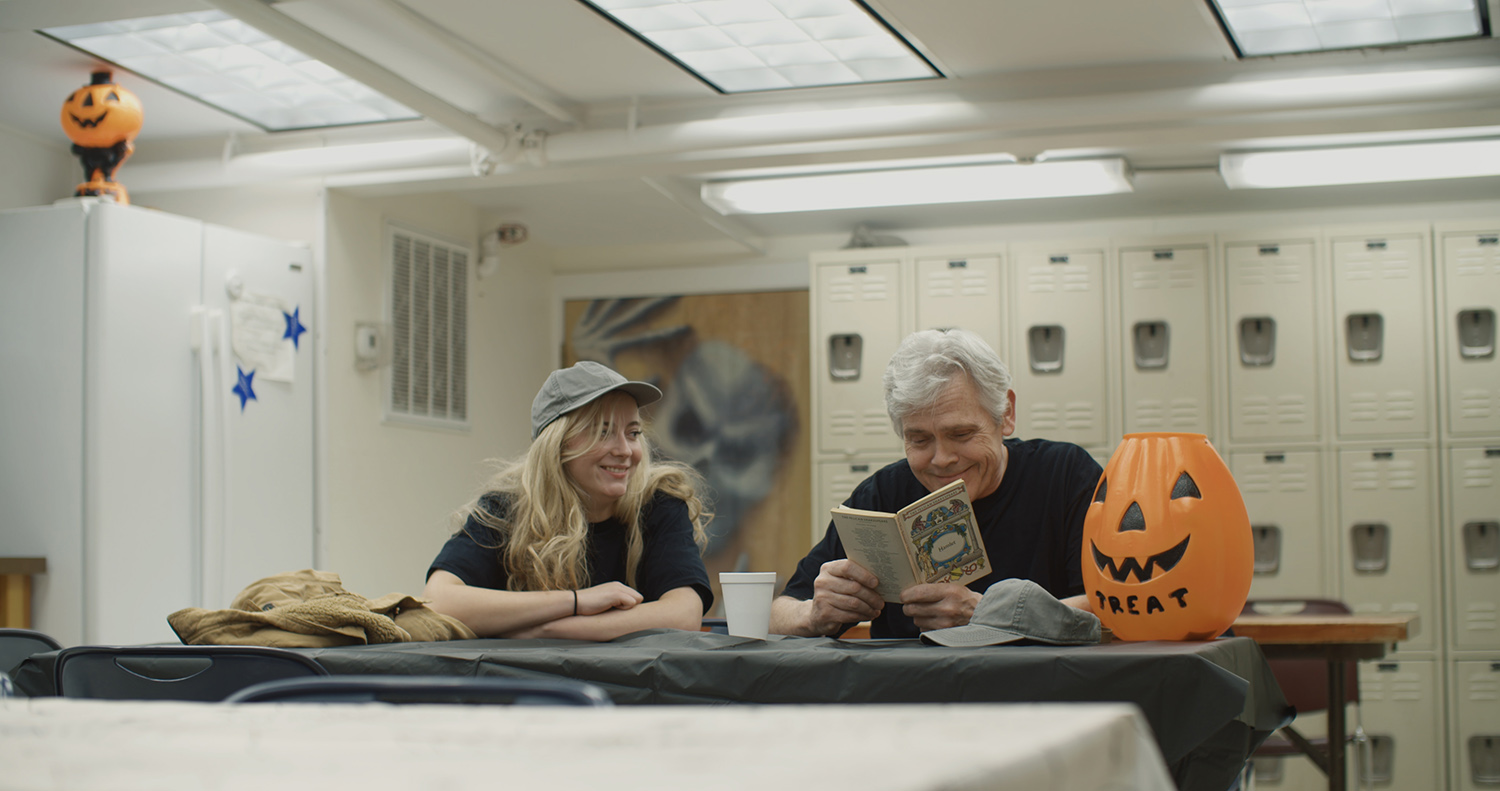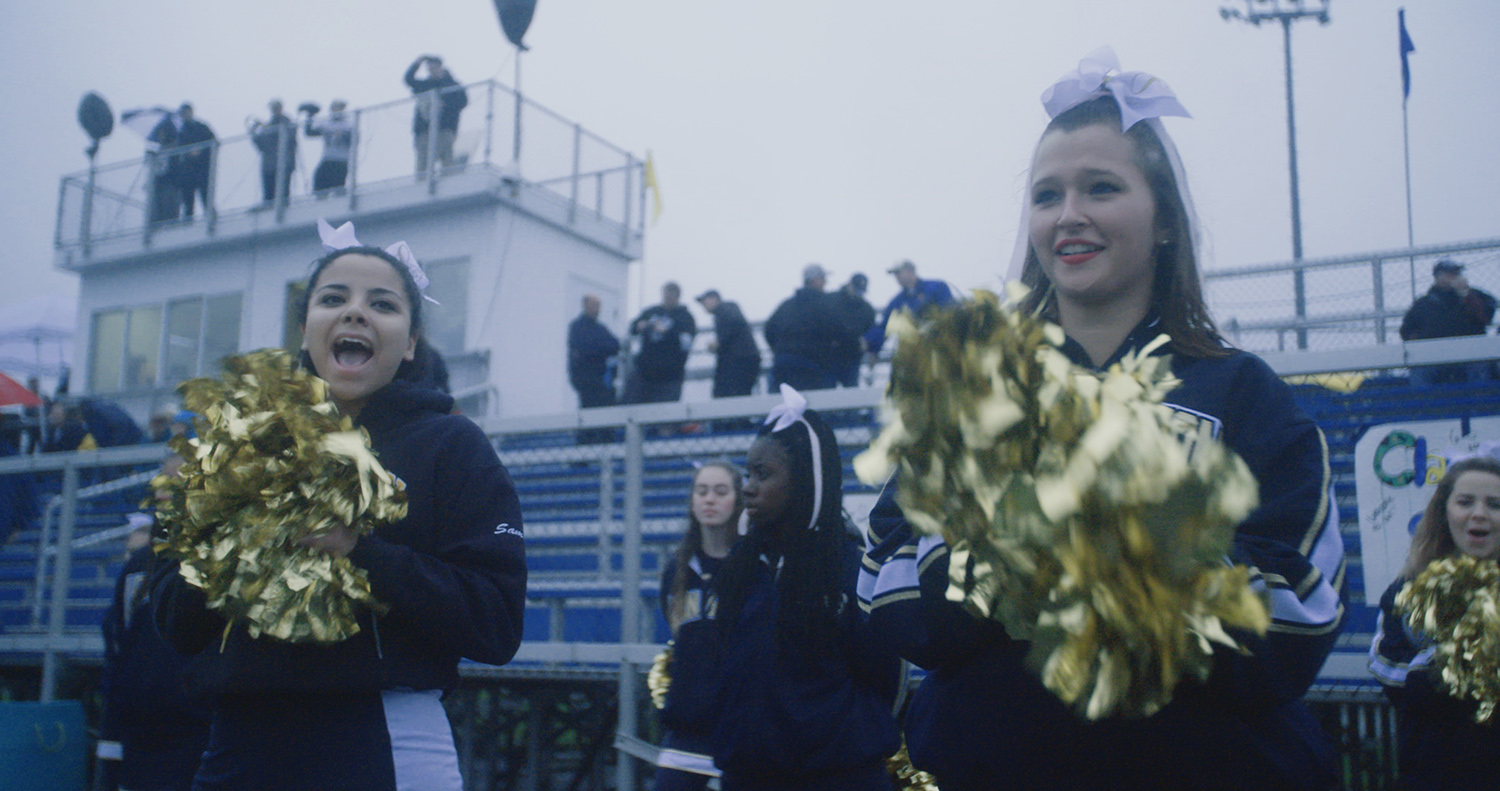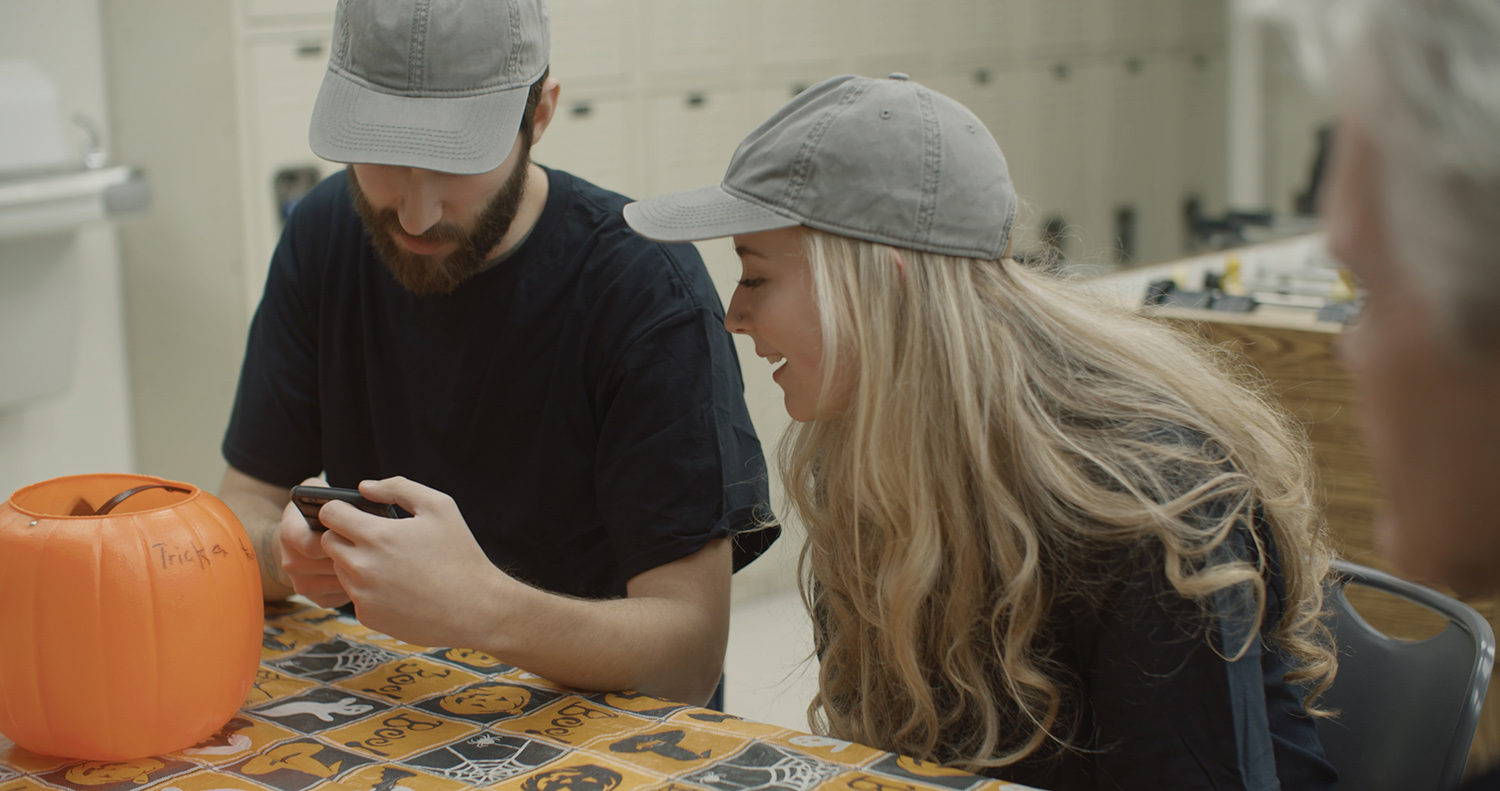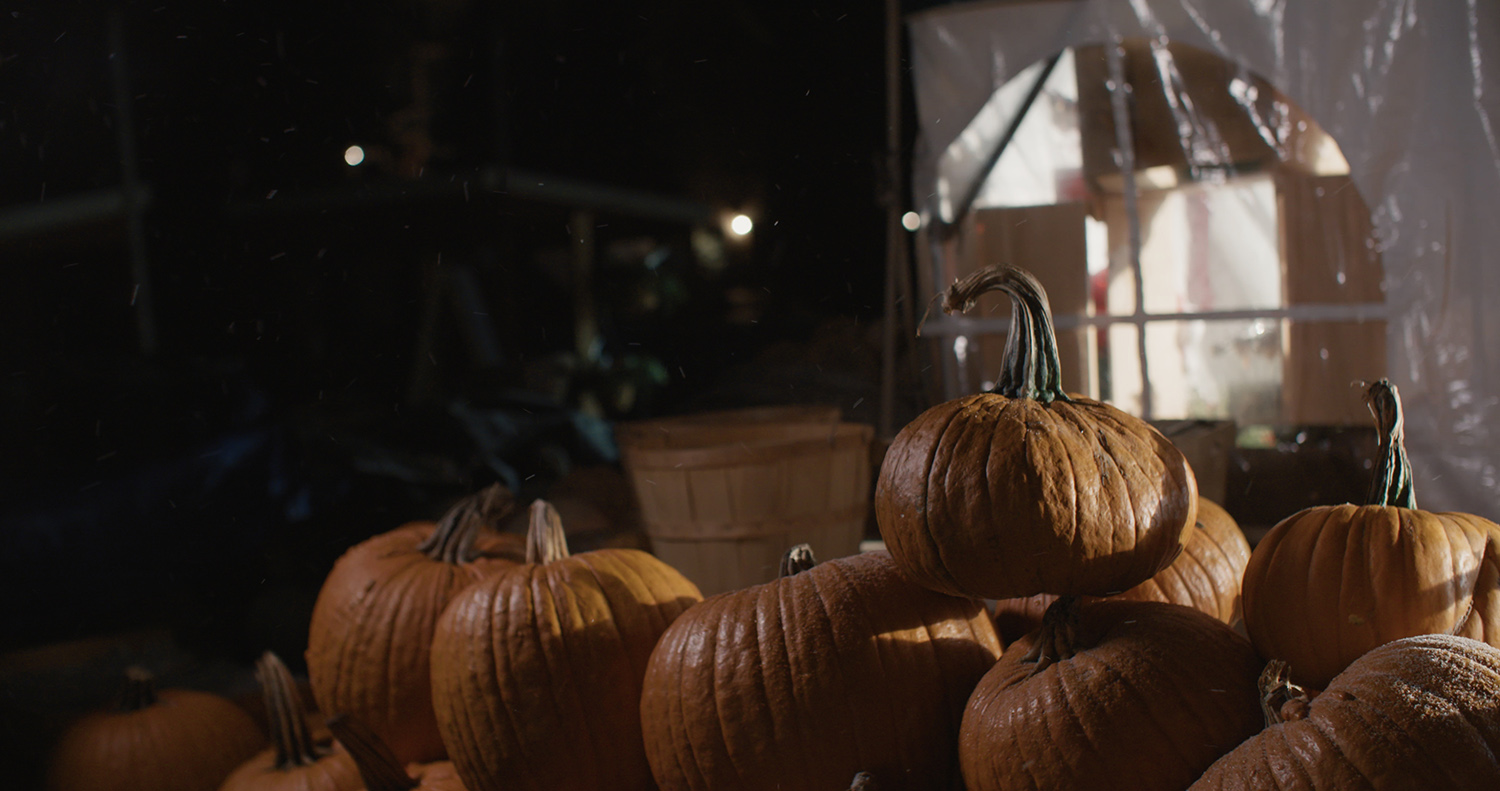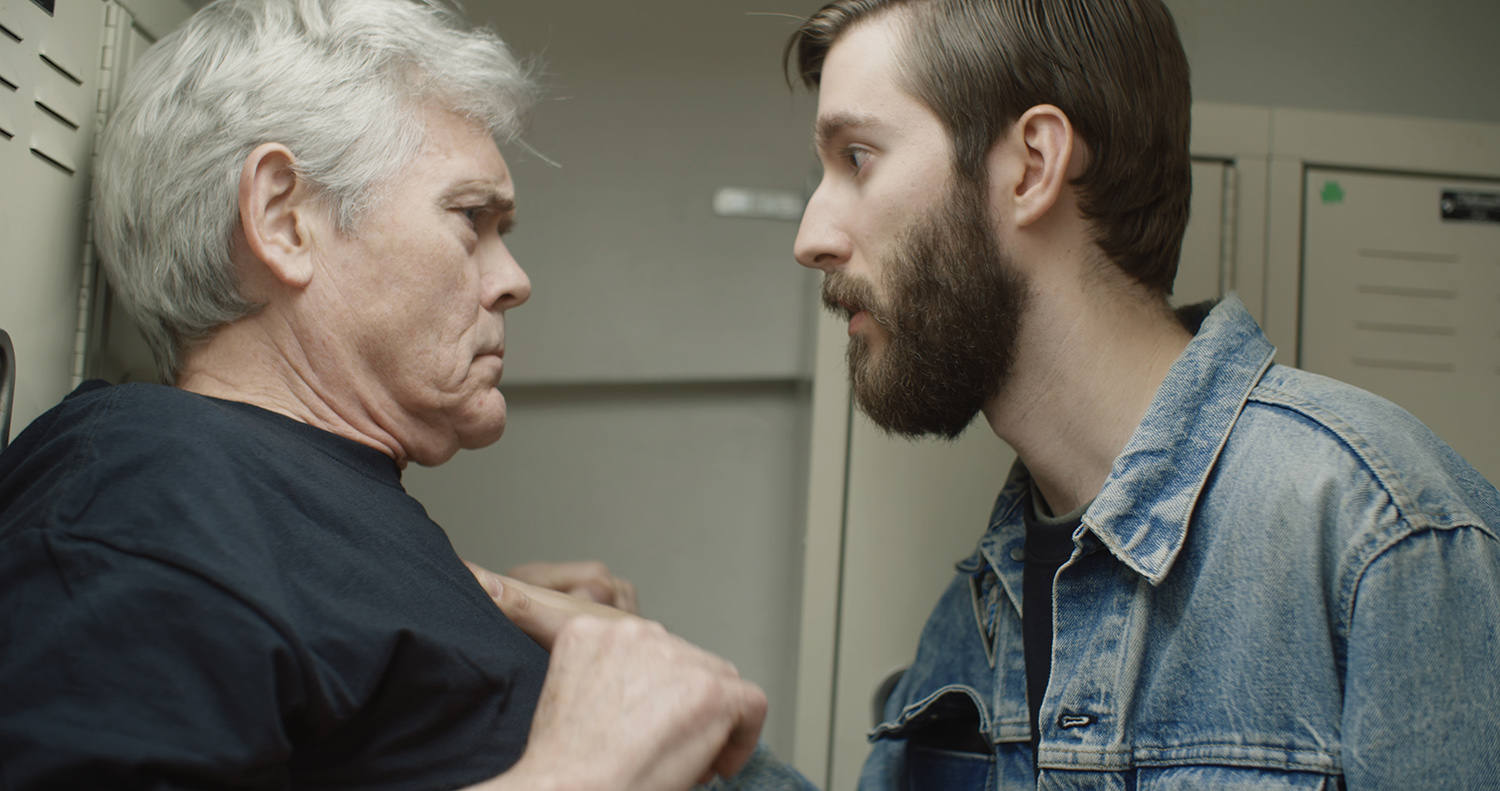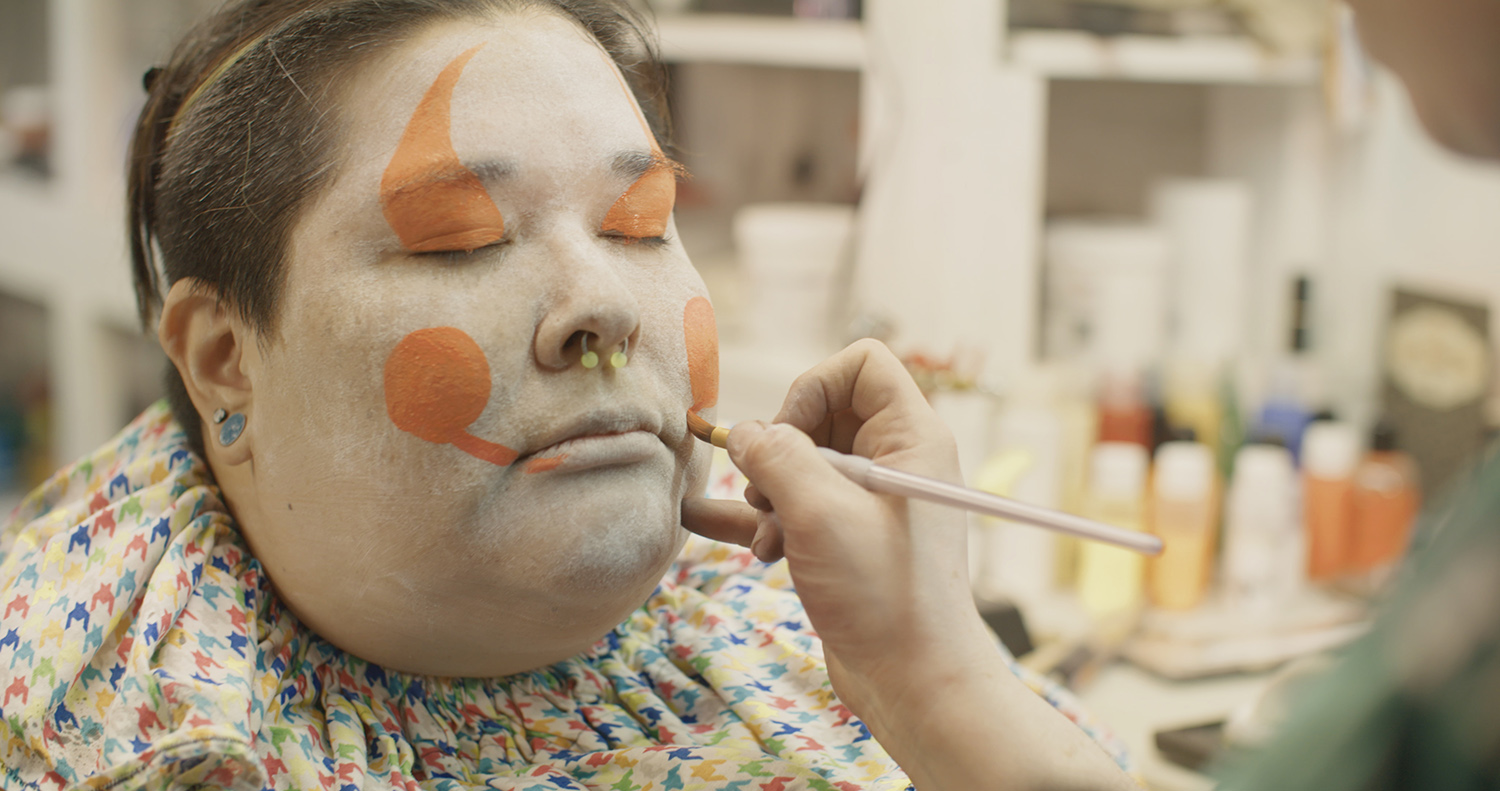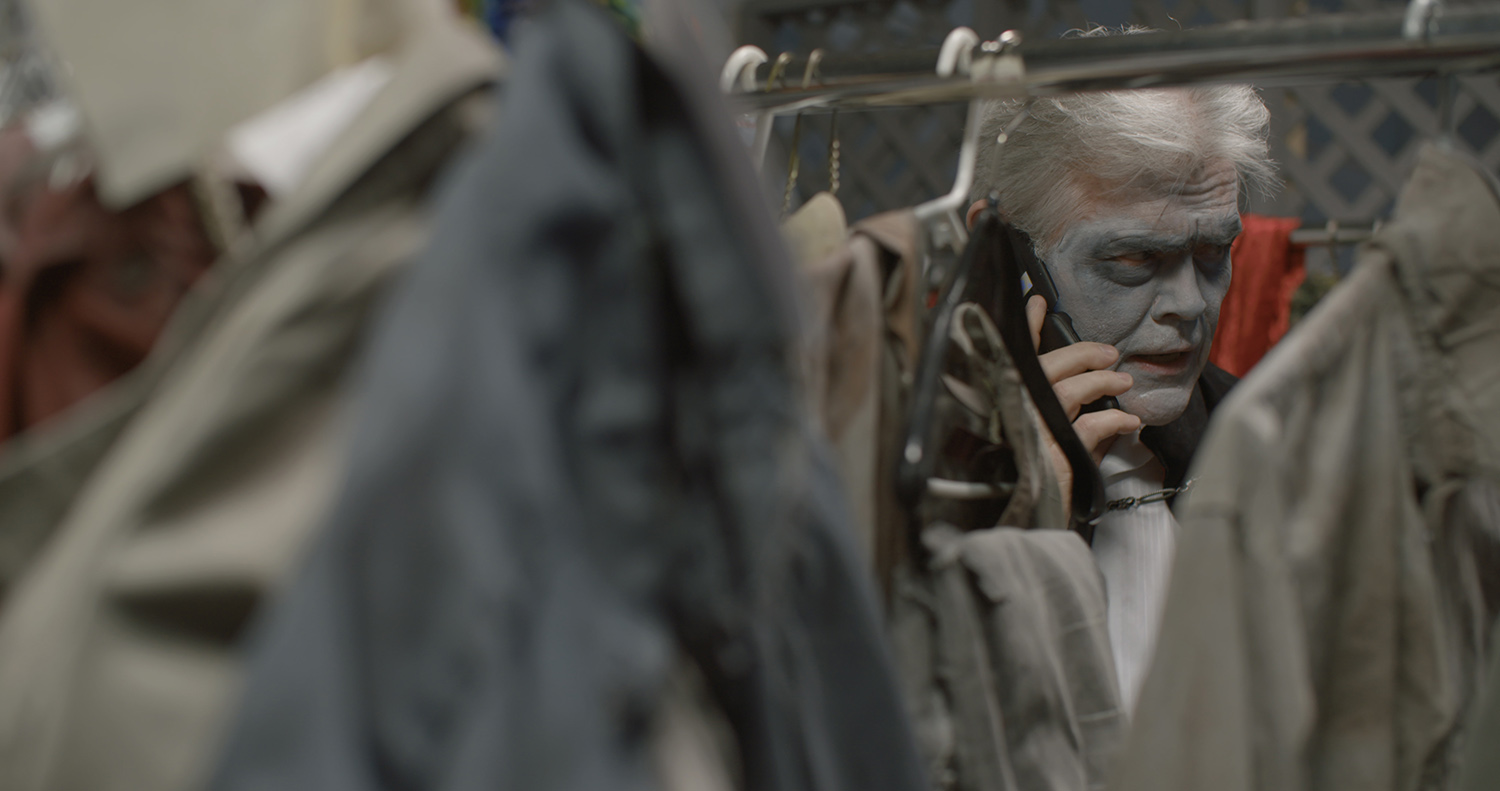COUNT CREEP
Director of Photography: Andrew Mui
Directed By: Rick Dorrington & Dave McHugh
Synopsis: A local celebrity "horror host" is questioned about a few murders that start happening in a small Massachusetts town. Having to take menial jobs working in a market and a haunted attraction to afford care for his sick brother, the pressure could prove to be too much for the Count Creep.
Camera: Sony PXW-FS7
Lenses: Canon L Series
Aspect Ratio: 16:9
Resolution: DCI 4K
the frame
---
Designing the Frame
Count Creep is a mystery film that explores ideas of integrity, friendship, fame and responsibility. Here's a look at designing the intertextuality of the frame.
Throughout the entire duration, we are never sure if John is the killer. To emphasize the suspicion, we blocked him in a way where he appears in the mirror twice. A duplicity is presented and we are unsure of his underlying motives.
Upon receiving contact info from a NBC producer, John makes a phone call in the costuming area. The location is crucial to the scene as costumes are synonymous with hiding one's identity. There exists the job he has now, but on the other end holds opportunity for what might be his big break on national television.
Often, we can't tell if John is wearing the costume, or if in fact the costume is wearing him. Behind are masks, which can be seen literally as they are, or as the many burdens that the Creep has to face, or possibly his demons.
We see John's disabled brother for the first time at his home. John is enveloped by Drew's figure which covers most of the frame, illustrating his massive responsibility for his brother.
At the supermarket, Anna shares a poem that she wrote during break.
When introduced to Cory, we see that he invades Anna and John's screen. But when we cut to the reverse, we see that John's face is the unrecognizable one. It is hidden in shallow focus, slowly disappearing from Anna's periphery.
For the first time we see Anna lit by an absolutely harsh far side key, confronting John after he warns her of Cory.
For many scenes, we shot the characters with a foreground element in order to convey the feeling of voyeurism. We wanted the possibility that someone or something is constantly watching the scene or in this case their next victim.

















